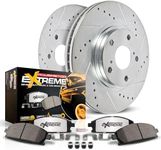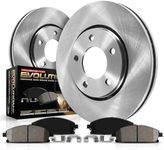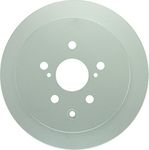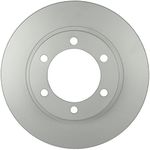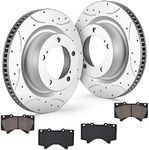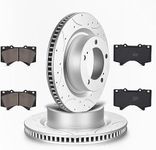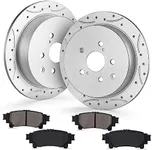Buying Guide for the Best Brake Rotors
Choosing the right brake rotors for your vehicle is crucial for ensuring safety and optimal performance. Brake rotors are a key component of your vehicle's braking system, and selecting the right ones can make a significant difference in your driving experience. When picking brake rotors, consider factors such as your driving style, the type of vehicle you have, and the conditions in which you typically drive. Understanding the key specifications will help you make an informed decision.MaterialBrake rotors are typically made from cast iron, steel, or carbon composite. The material affects the rotor's durability, performance, and cost. Cast iron rotors are common and offer good performance and durability for everyday driving. Steel rotors are lighter and can improve fuel efficiency and handling. Carbon composite rotors are high-performance and used in sports cars and racing due to their excellent heat dissipation and lightweight properties. Choose the material based on your driving needs: cast iron for regular use, steel for a balance of performance and efficiency, and carbon composite for high-performance applications.
TypeThere are several types of brake rotors, including solid, vented, drilled, and slotted. Solid rotors are simple and effective for normal driving conditions. Vented rotors have internal vanes to dissipate heat more effectively, making them suitable for heavier vehicles or more demanding driving. Drilled rotors have holes drilled into them to improve heat dissipation and reduce weight, ideal for performance driving. Slotted rotors have grooves that help remove debris and gases, providing better braking performance in wet conditions. Choose solid rotors for everyday driving, vented for heavy or demanding use, drilled for performance, and slotted for wet or off-road conditions.
SizeThe size of the brake rotor, including its diameter and thickness, affects braking performance and compatibility with your vehicle. Larger rotors provide better heat dissipation and stopping power but may require compatible calipers and wheels. Smaller rotors are lighter and may be sufficient for smaller vehicles or less demanding driving. Check your vehicle's specifications to determine the appropriate size, and consider larger rotors if you need enhanced braking performance, especially for high-speed or heavy-duty applications.
CoatingSome brake rotors come with protective coatings to prevent rust and corrosion. Coated rotors can extend the lifespan of the rotor and maintain performance over time, especially in harsh weather conditions or areas with road salt. If you live in a region with a lot of rain, snow, or salt on the roads, consider coated rotors to ensure longevity and consistent performance. For dry climates, uncoated rotors may suffice.
CompatibilityEnsure that the brake rotors you choose are compatible with your vehicle's make, model, and year. Compatibility is crucial for proper fitment and performance. Check your vehicle's manual or consult with a professional to confirm the correct specifications. Using incompatible rotors can lead to poor braking performance and potential safety issues. Always verify compatibility before making a purchase.
